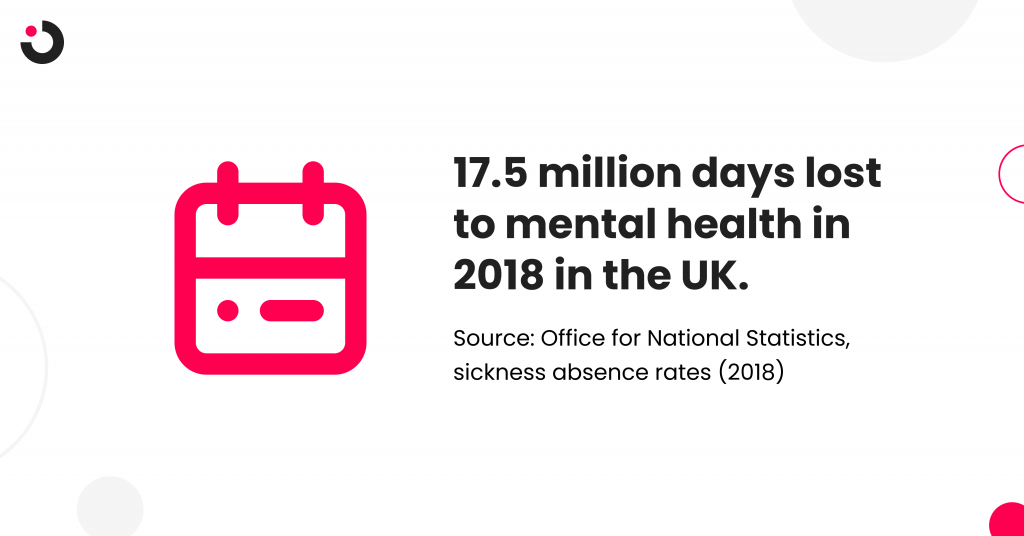
Absenteeism: The staggeringly high cost of financial stress
To keep your business operating effectively, you need the right people in the right positions. Your organisation’s plans can soon be scuppered by absenteeism. In this article, we’ll look at how financial stress is linked to absenteeism and how you can tackle it.
There are numerous factors that drive absenteeism. Effective absence management can only exist when these factors are recognised. Beyond recognition, there also needs to be an understanding combined with a strategy to reduce absenteeism levels.
Absence management is a key tool to keep your business running smoothly. So when absence levels begin to increase, there is a ripple effect. The remaining employees begin to feel the stress of picking up their colleagues’ tasks. This can make them more likely to be absent too.
How is wellbeing related to absenteeism?
Already got a wellbeing strategy in place? Then it’s highly likely that you’ve already recognised the link between wellbeing and absenteeism.
Evidence shows that employee absenteeism reduces when their wellbeing is considered and cared for. Creating a work environment where stress is recognised and effectively managed brings its own rewards.
In contrast, the absence of considering employee wellbeing can have a devastating impact. A report by Westfield Health found that absenteeism cost UK businesses £14 billion in 2020. That was an increase of £1.3 billion on the year before.
Figures also show that during 2018, some 141.4 million working days were lost due to absenteeism with 17.5 million of those caused by poor mental health. Some of the most common causes of absence from work include:
- Stress
- Anxiety
- Depression
A major concern with these figures is that they are at an all-time high. As a result, organisations need to do more to address the causes of absenteeism.

Does financial stress impact absenteeism?
Most organisations are already addressing physical and mental wellbeing through various initiatives. Now the importance of financial wellbeing is beginning to be more widely understood.
There is an inextricable link between financial stress and absenteeism. The CIPD’s Employee Financial Wellbeing report indicates that employees in high financial stress groups averaged 6.2 full-time equivalent days lost. In contrast, those in low financial stress groups averaged 3.8 full-time equivalent days lost.
According to research by pension-provider Aegon, 4 million working days are lost each year as a result of financial stress. Addressing poor financial wellbeing will help your organisation see a reduction in absenteeism levels.
Mental health is the most common cause of long-term absence and is also one of the top reasons for short-term absence. Stress is reportedly the third most common reason for long-term absence.

Stress and poor mental health are linked to your employees’ financial wellbeing. Poor mental health can make money worries worse. Similarly, money worries can have a detrimental impact on mental health. It’s a cycle that can be hard to break without help or support.
What’s behind poor financial wellbeing?
Poor financial wellbeing can arise due to a number of reasons, including:
- Poor financial literacy or a lack of financial education
- Development of bad financial habits, like overspending and not saving
- Fluctuating income from month to month (such as those working in the gig economy)
- Series of life events e.g. job loss and marital breakdown
Life events can be a major cause of financial stress, despite being some of the happiest moments of our lives.
- Marriage (getting married can get very expensive!)
- The arrival of a new baby
- Divorce
- Poor health (and the impact this can have on someone’s ability to work)
When these get added to unexpected expenses, paying off debts, and dealing with emergencies, an employee’s financial wellbeing can take a turn for the worse.
What are organisations doing to combat absenteeism?
Absenteeism is nothing new. Most companies have already adopted strategies aimed at reducing, or at least managing, absenteeism.
Some of the current methods and tools include:
Return-to-work interviews
These are meetings that take place when an employee returns to work. Return to work interviews are used to establish whether an employee is fit and well enough to work, but they also explore the reasons behind the absence. This can help to identify patterns and give employers an opportunity to offer support to the employees.
Trigger mechanisms
These work in such a way that there are key points that trigger a certain action. They are used to highlight both levels and patterns of absence. When a certain level is reached, managers will follow the guidance and take the appropriate action.
Unpaid leave
Employees may go off sick if they experience a family emergency or have an issue with child care. So another effective absence management tool is allowing employees to take time off (in addition to annual leave) when the need arises. A flexible approach with leave means that absenteeism is reduced.
How a health and wellbeing strategy can reduce absenteeism
The mere existence of a health and wellbeing strategy has a positive impact on organisations’ employees. It shows your employees that their company cares and has their welfare at heart. This can be a powerful motivator and combat more than absenteeism alone.
There are numerous aspects of an health and wellbeing strategy. Some of the elements that you are likely to come across include:
Physical and mental health promotion
It has long been accepted and understood that a physically healthy workforce has its benefits. Fitter and healthier employees are less prone to illnesses. They are likely to be more motivated too in comparison with those with poor health. This has a direct impact on absenteeism.
Over recent years, organisations have begun to give equal consideration to their employees’ mental health. Stress, anxiety, and depression can lead to an upward trend in rates of absence. Promoting mental health has the potential to remedy this.
Creating a happy working environment
A happy workforce is a productive workforce, or so the saying goes. While productivity is another key metric for your organisation, this also has an impact on absence rates. A safe and happy working environment motivates your employees to come to work and bring their A-game.
This doesn’t take away the fact that there will be days when your employees would love nothing more than to be elsewhere. However, they are far less likely to go off sick for minor issues when they could, in reality, still be at work.
Promoting financial capability and resilience
By understanding the impact of financial stress on absence, organisations can recognise the value of addressing this in their wellbeing strategy. By promoting financial wellbeing, companies can empower their employees and make a real difference to their lives.
Offering employees on-demand pay is a great example of how a company can help its employees take control of their money. For employees, the ability to get paid when they want can significantly reduce the financial stress created by an unexpected expense. This can help build up their financial resilience.
Reducing financial stress through a financial wellbeing strategy is a great way to tackle absenteeism
Organisations can reduce their employees’ financial stress by implementing a strategy, which may include benefits such as on-demand pay.
Your organisation’s financial wellbeing strategy should focus on the needs of your employees. In general, financial literacy is a great area to focus on as this can reduce financial stress associated with poor money management.
With this in mind, here’s a few areas that a financial wellbeing strategy may address:
Healthy budgeting habits
While school teaches us maths, there’s a lot more to budgeting in real-life when the consequences of getting it wrong can be serious. Learning to budget even as an adult can have a measurable and positive impact. It can also improve levels of financial wellbeing.
Financial wellbeing during redundancy
When redundancies occur, this often leaves employees in a position that they have never experienced before.
Being without an income is extremely daunting for most people. This is mainly because of the consequences of not having a regular pay packet. Some employees who are made redundant may receive a cash lump sum.
Both of these scenarios require employees to understand how to effectively budget. Whether that’s making a lump sum last as long as possible, or drawing up a new budget based on one income rather than two.
Financing retirement
As employees reach the end of their working life, they have to make some difficult financial decisions. They need to decide on what to draw from their pension in terms of a lump sum. They also need to consider what they need to do to ensure that their pension is really working for them.
Often this is complex and some employees made need extra help and support to understand what they need to do and what the impact of those decisions are. Access to an impartial financial advisor can bring real benefits.
Importantly, employees of all ages should be aware of their pension choices and how to manage theirs effectively. It’s too late to wait until retirement is approaching to think about your pension.
Debt management
Debt is a common part of life – mortgages being a key example. It only becomes a problem when it is poorly managed. When employees are financially literate, they are more capable of understanding how to manage their debt carefully and avoid repeatedly turning to loans and other forms of credit. Employees with a good level of financial literacy are also more aware of their options in case their debts become wholly unmanageable.
Tips on tackling financial stress and absenteeism
If you’re looking to move forward and implement a financial wellbeing strategy in your company, here are some key points to consider:
- Tailor your strategy to your business, your people, and their individual needs
- Identify your priorities for the strategy and how they tie into your business.
- Engage your employees by asking for their input in creating your strategy
- Enlist wellbeing champions to help turn your strategy into actions
- Ensure that your management team buy-in to the strategy and the goals you plan to achieve by involving them and communicating the benefits
- Integrate your wellbeing strategy into your organisation in multiple ways so that they become inextricably linked
On-demand pay – a win-win approach to absence management
Do you want to add an absence management tool to your organisation that doubles as an employee benefit? If so, get in touch today and see how on-demand pay from Openwage can boost your employees’ financial wellbeing.

